It’s Halloween week, and I can’t think of a better place to take you than on a trip to Highgate….
‘What are you doing this weekend Hannah?’, a colleague asks. ‘Well’, I say, ‘I’m actually off to a graveyard for the day’. ‘Oh right’ they conclude, looking at me like I’ve lost my marbles and might need to get checked out. But bear with me because…….this graveyard is AMAZING. It’s so atmospheric, so full of history, so peaceful and calm and interesting to walk around. And it’s so worth a visit if you’re in London and have the time.
Contents
- Contents
- The History of Highgate Cemetery
- What to see at Highgate Cemetery
- Is Highgate Cemetery worth visiting?
The History of Highgate Cemetery
In Victorian times, London’s population had almost doubled in a short space of time. It meant there wasn’t enough grave space at local churches, and people were being put in mass graves, or not properly buried in the street (complete with limbs sticking up). Savvy entrepreneurs of the time saw a business opportunity – to open a cemetery in the countryside (at the time) outside of London, offering a resting place for you or your loved ones.
The biggest selling point was safety. This was at the time of grave robbers, who would punch through coffins, pull out the whole body – sell off the hair, the teeth and then the body to medical research! Highgate offered the Victorians somewhere with guards, well secured, so that resting in peace really could be that. The Victorians spent a lot of money on death, it was important to them, and so business boomed.
But only for so long. Grave sites were sold forever meaning once the plot of land had sold, that was it. So eventually, money dried out of course. Eventually the cemetery passed from private ownership to the council, who left it open and to fall in to ruin. Graves were vandalised, trees and ivy grew everywhere (all trees here are self seeded!), gravestones were split and lots of people used it as a site for vampire or ghost hunting.
Thankfully, the local residents decided they’d had enough and set up the ‘Friends of Highgate’ organisation, which now runs the site. Whilst the graveyard hasn’t been restored, it’s been cleared and is now open for paying visitors only. So visit I did, and what a treat it was.
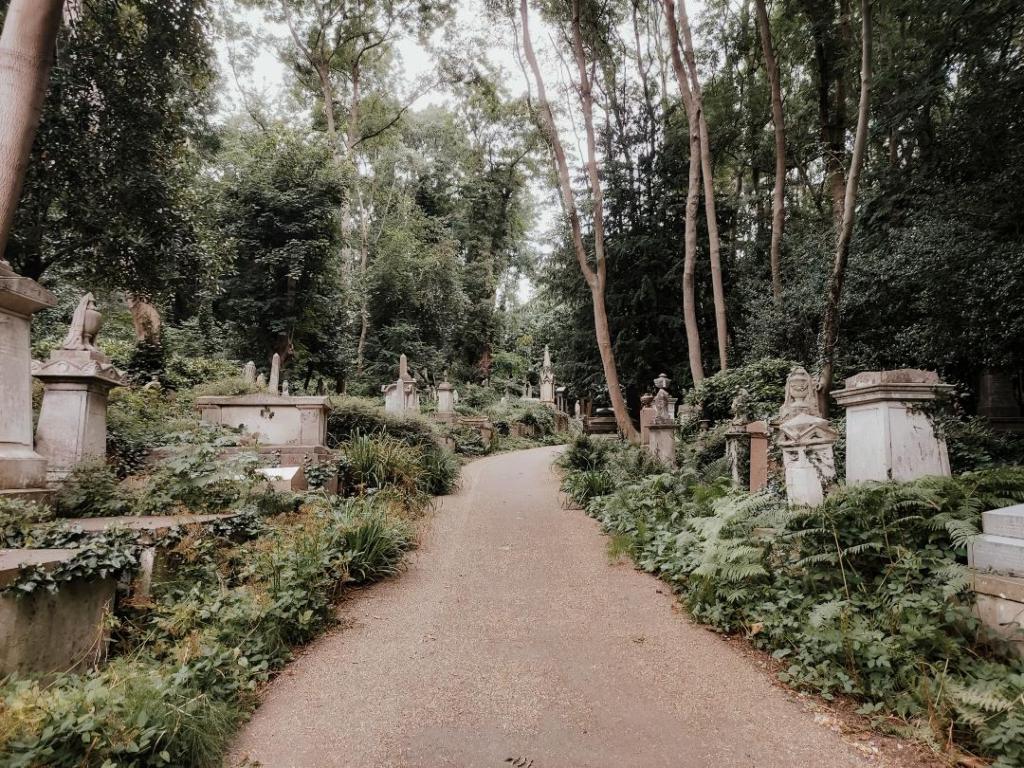
What to see at Highgate Cemetery
Highgate is split in to the East and West cemeteries. You can turn up and visit the East cemetery, but for me the West is the main attraction. You can visit the West cemetery on a guided tour for £14, which I really recommend doing, and then self guide around the East on the same ticket.
Circle of Lebanon
In the West cemetery, the star of the show is the Circle of Lebanon – which previously housed a massive ancient Lebanese cedar tree at its centre, around which a circle of tombs was built. However in 2019, significant decay was found in the tree, which was at high risk of collapse so it was removed completely and replaced, but it will be decades until it grows so at the moment it looks like a bed of wildflowers.
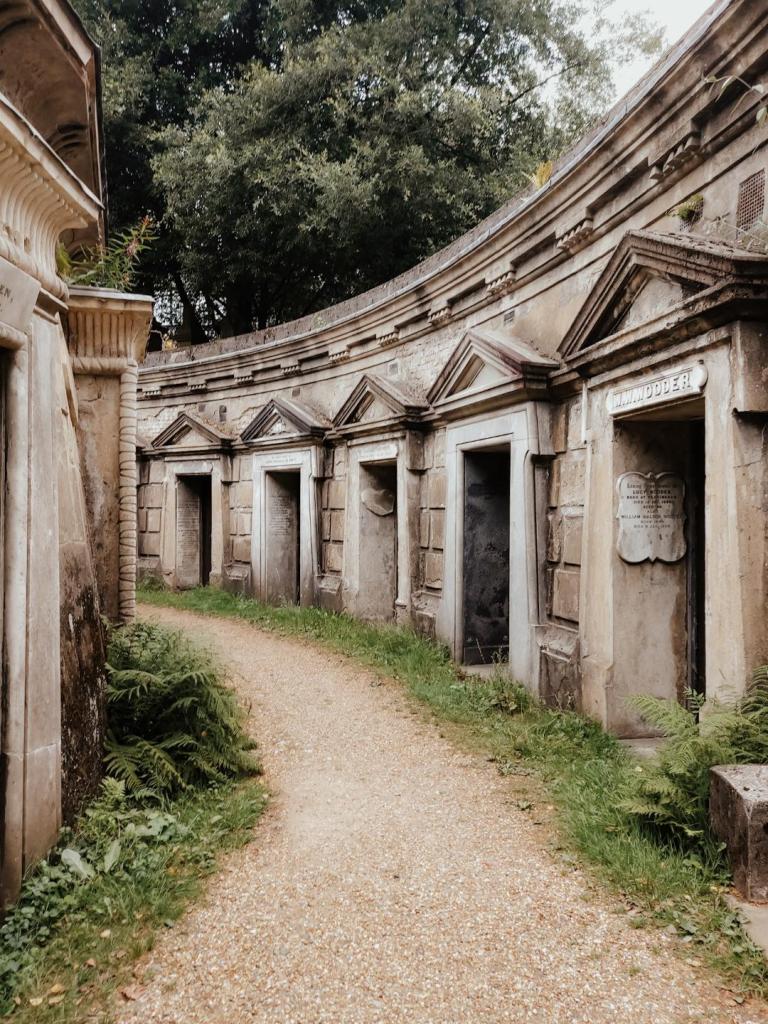
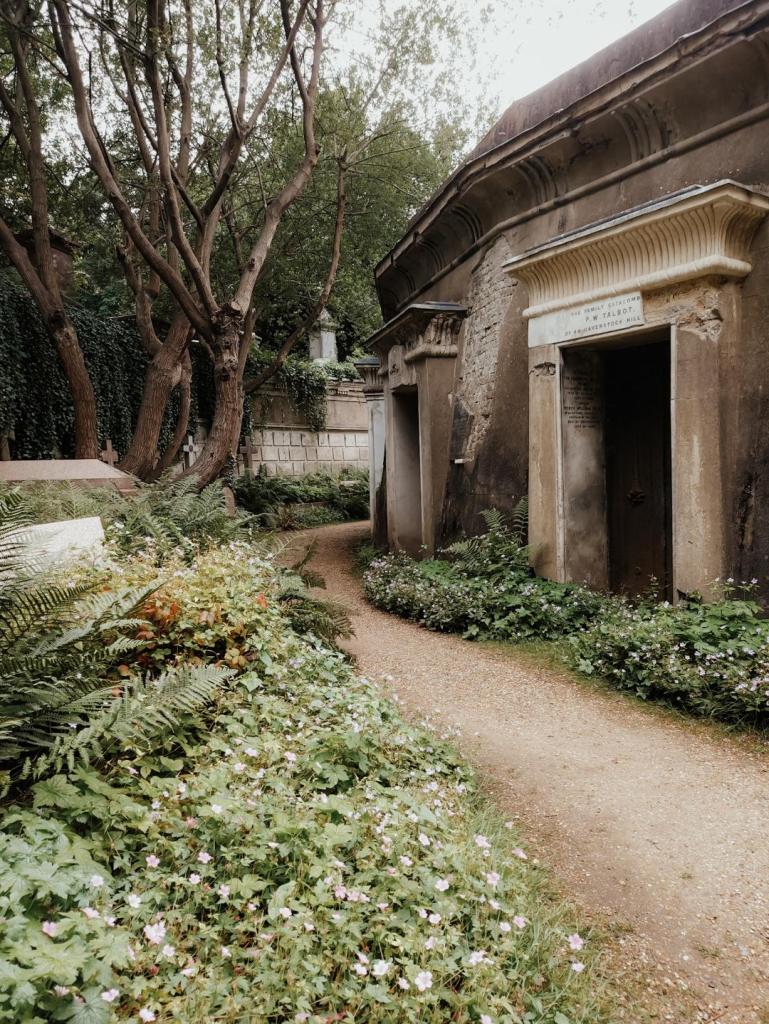
Egyptian Avenue
Another highlight on this side of the cemetery is the Egyptian Avenue. Interestingly, the Victorians were fascinated with all things Egyptian and Greek, as they still had in recent memory Napoleon’s campaigns, and travel was just starting to happen. The cemetery is full of Egyptian symbology, such as obelisks. An obelisk cut in half represents a life cut short – i.e. someone who has died before their time, and these can be seen all around the cemetery marking young people’s graves.
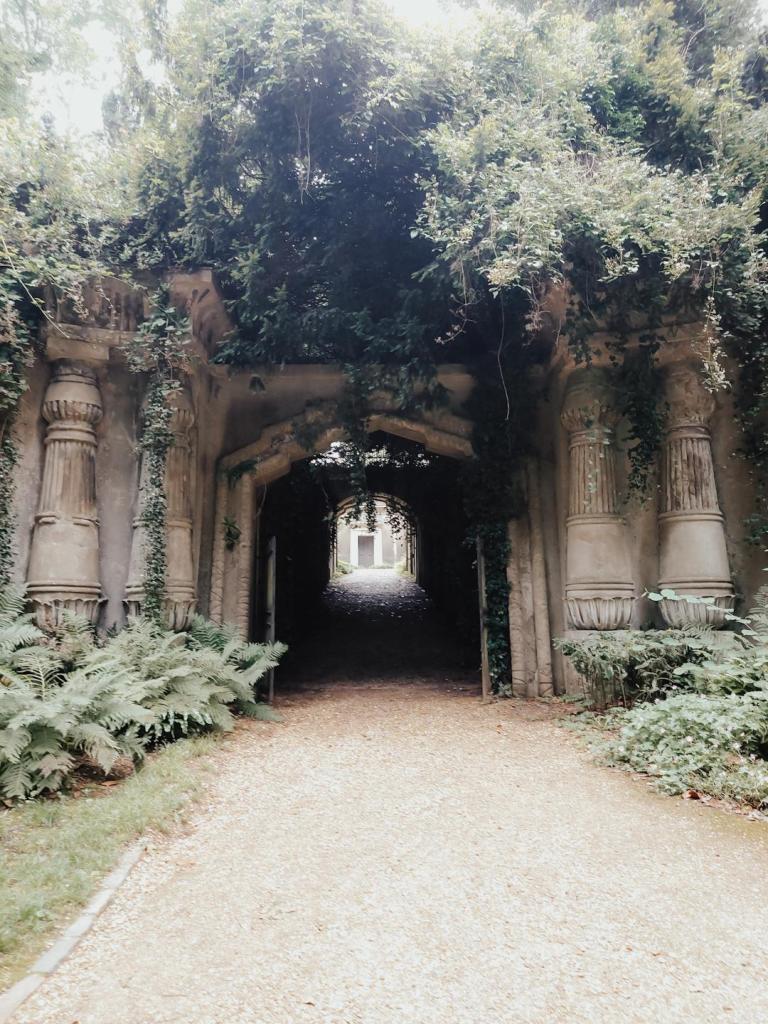
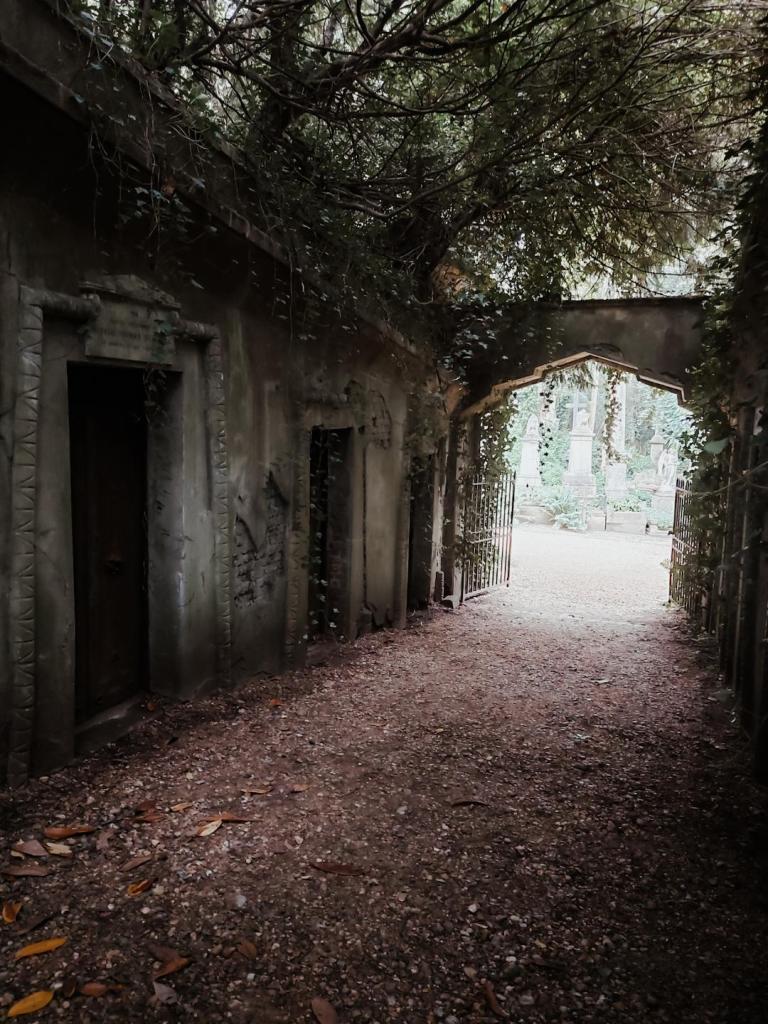
The Terrace Catacombs
The West cemetery is also home to The Terrace Catacombs, which were part of the original buildings of the cemetery in 1838. Inside, there is a brick-vaulted gallery, lit by oculi set in the terrace. It is lined with separate sections, each large enough to take a single coffin end on, from floor to ceiling down both sides of length, 825 in all.
West Cemetery Famous Graves
There are a number of people in the West cemetery worth paying respects to as well. Mrs Henry Wood is near the Circle of Lebanon, and most won’t have heard of her. She actually sold more books than Dickens in her time, but wrote in her husband’s name rather than her own (Ellen Wood). Unsurprisingly, given the limited power of women at the time, her memory has largely been lost to time, but apparently she’s very popular in Australia!
Another highlight is the Julius Beer Mausoleum, a testament to a father’s love for his lost daughter, and based on one of the Seven Wonders of the Ancient World. Inside, Beer’s daughter Ada is shown being lifted heavenwards by an angel (bearing her mother’s face) in a very touching sculpture. You can also see tributes to a teenager who lost her life when her dress caught fire, the grave of Thomas Sayers – a famous bare knuckle boxer who’s dog is immortalised on his tomb, famous poet Christina Rossetti and even Michael Faraday, who invented electromagnetism.
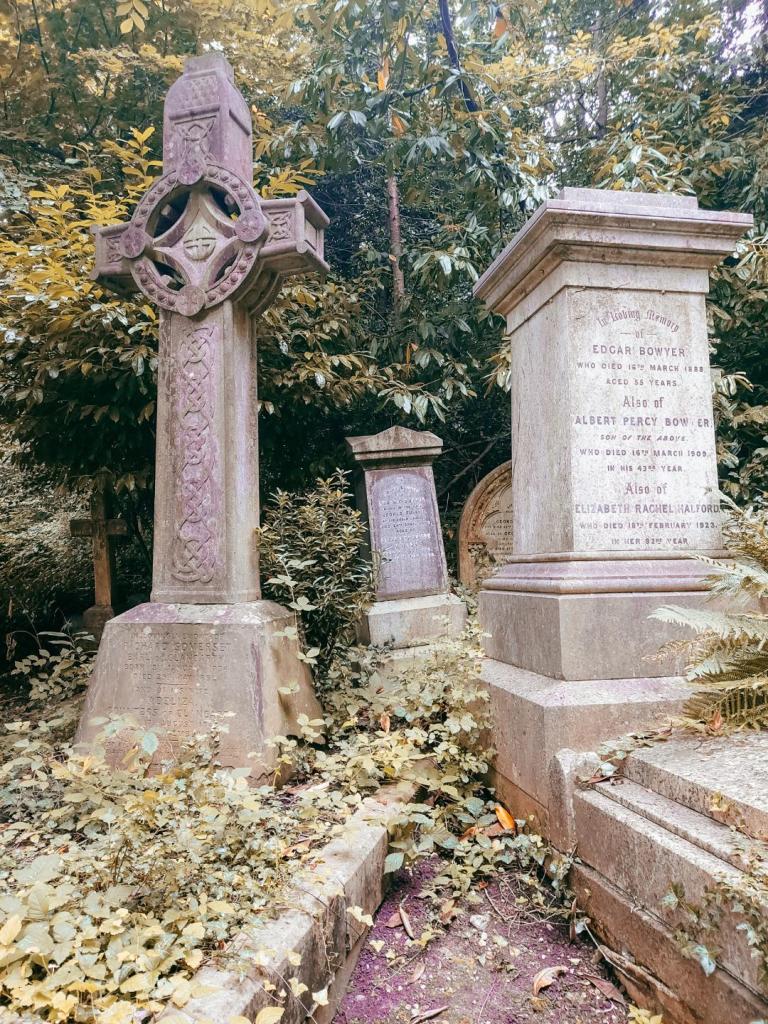
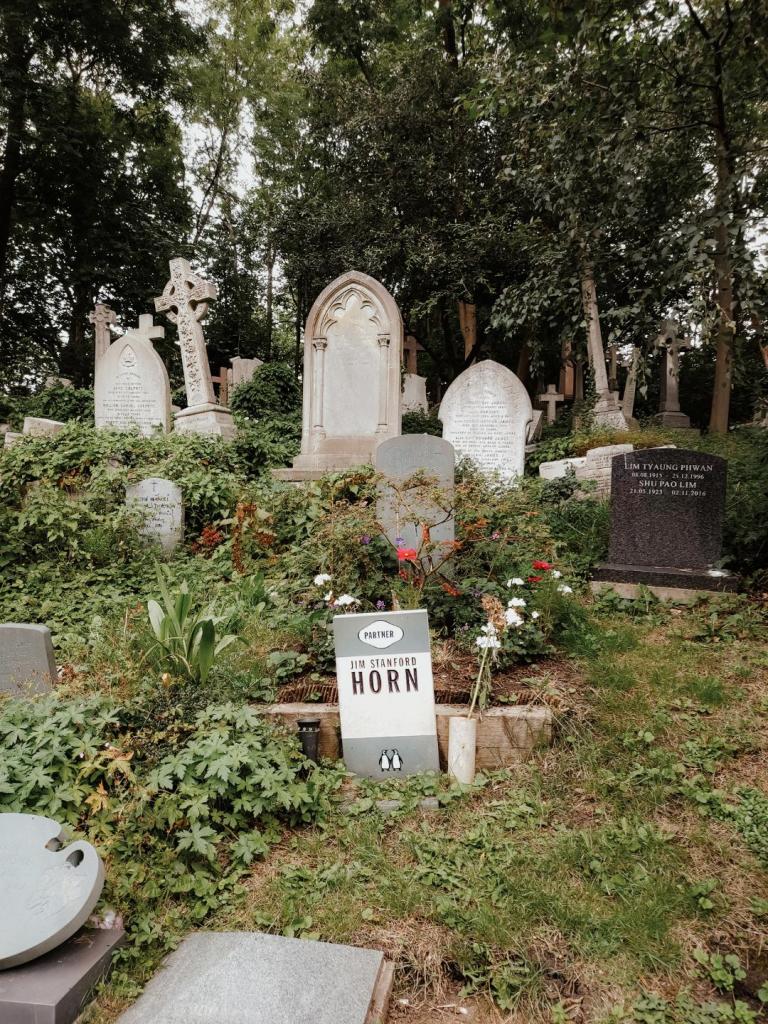
The most special part of the West cemetery for me though was visiting my family. Under a broken and damaged headstone, lies a grave with my great, great, great Grandfather, and 4x great Grandparents in it. The Victorians believed in visiting the dead, and talking to them, as you would in life. I didn’t do that, but I paid my respects and had a few moments of thought for the people without whom I wouldn’t be here at all.
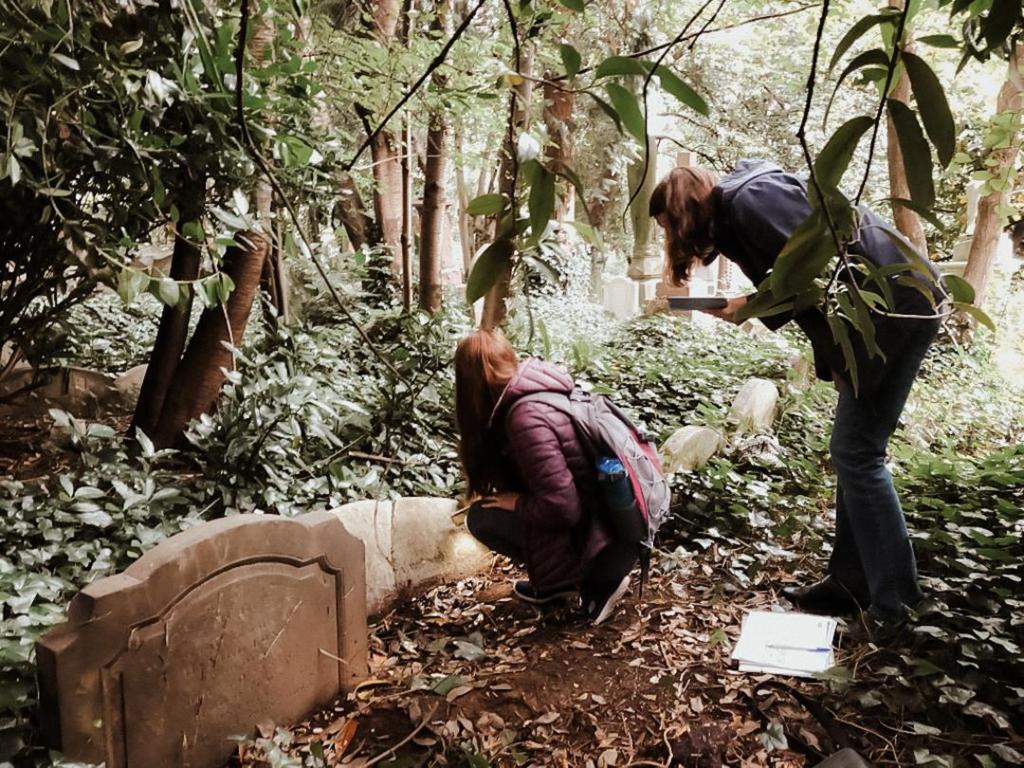
You can still be buried at Highgate (for a fee, of course!) and so there are also some more recent graves. Alexander Litvinenoko, a Russian who spoke out about Putin and was poisoned on British soil in 2006 is buried here, as well as Ugo Ehiogu, an ex-professional football (soccer) player who died of cardiac arrest on a training ground in his 40s. I didn’t take photos out of respect.
East Cemetery Famous Graves
In the East cemetery, the main draw is the grave site of Karl Marx, which is a must see – though it draws the most crowds too. I personally found the tomb a little grotesque, having his face on it, unlike any other grave in the cemetery. Also in the East is Douglas Adams (of Hitchhiker’s Guide to the Galaxy fame) and George Eliot, the famous author – and yet another woman who had to write under a man’s name (she was actually called Mary Evans)!
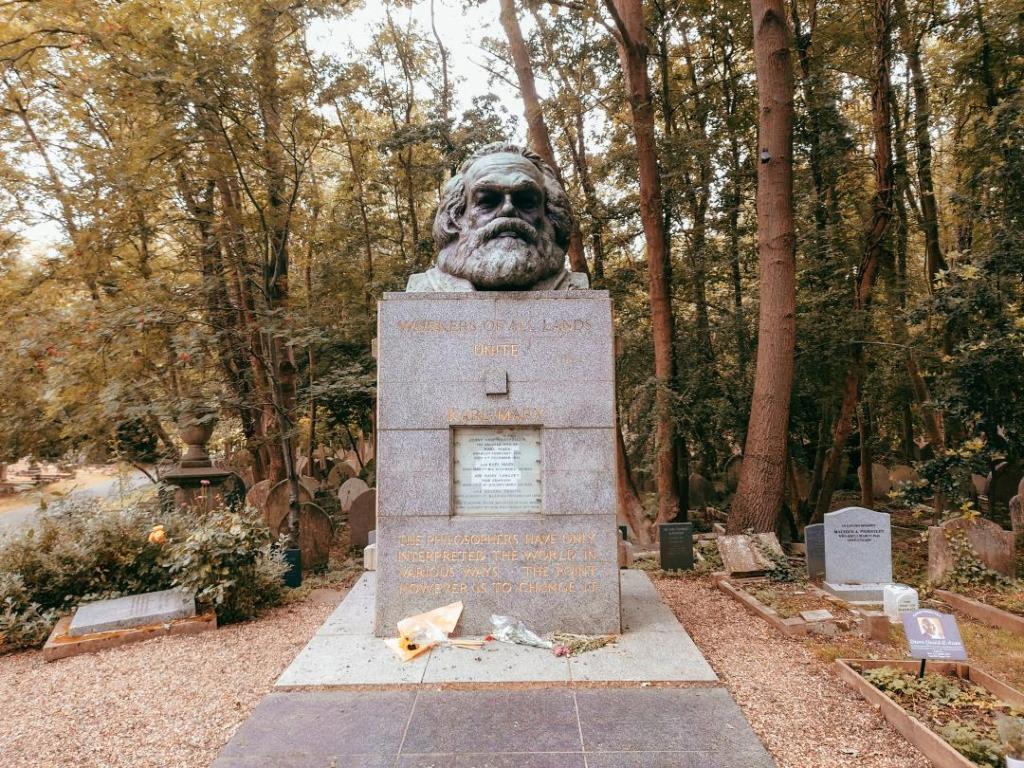
Is Highgate Cemetery worth visiting?
This cemetery is incredible, so yes it’s absolutely worth visiting and blew me away. It’s true Victorian Gothic and so atmospheric. The volunteers who run the tours and the cemetery are wonderful, fun and genuinely passionate about the site. To step back in time and see how things were in the Victorian age with mausoleums and monuments and so much symbolism is very interesting.
What I found hardest is two fold. One, like everything, you had to pay for it. The poor couldn’t be buried here, and I often feel like the poor are written out of history. It’s the same for women. Whilst many women are buried here – it’s more often than not under their husband’s name. Women are defined as ‘wives of’ or ‘Mrs Henry Wood’, rather than wonderful women in their own right. Nothing summed this up more than the ‘lost girls’. In the West cemetery there is a small strip of land for a common grave which isn’t marked. It was bought by a charity to bury the bodies of girls working as prostitutes who didn’t survive – there are 10 girls here, one just 12 years old. They were poor and female, but thankfully – for 10 of them at least out of a population of thousands – they aren’t completely forgotten or erased from history.
I hope that as a society we are better at recognising women, those from disadvantaged backgrounds and all minorities – both in life and in death. But with child prostitution still a huge issue, racism and nationalist views seemingly on the up, and everything going on in the world, sometimes I can’t help but wonder if we’ve learnt anything at all.
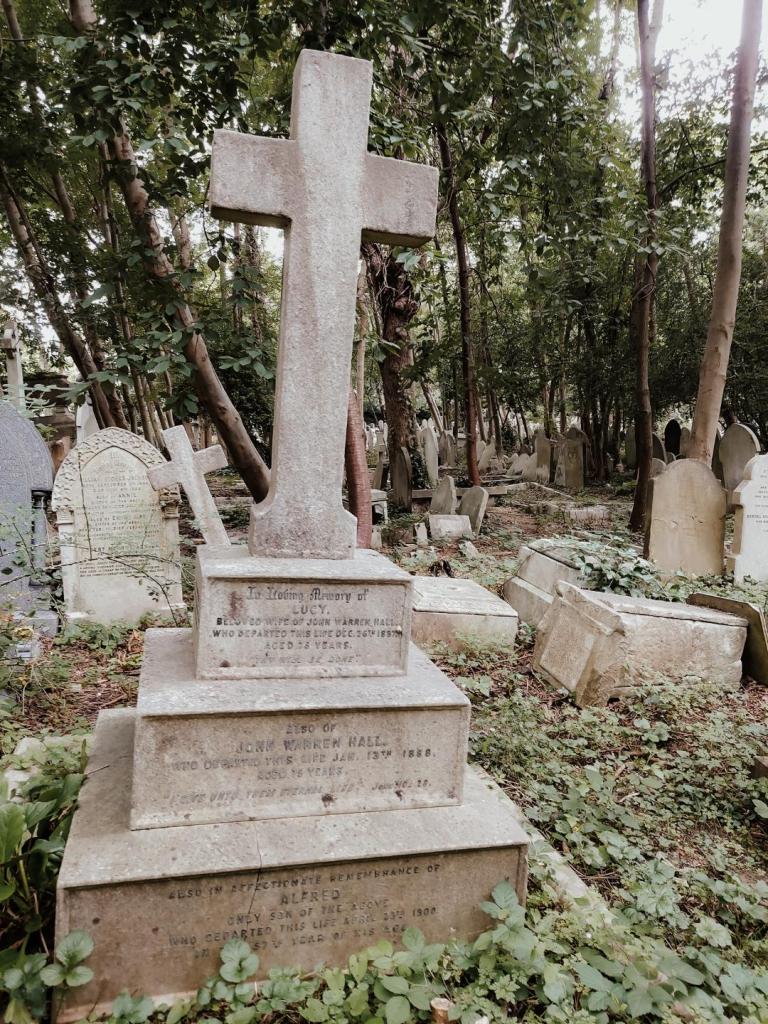

So, what did you think? Would you visit this unique place if you were in London? I hope you enjoyed the tour and found it interesting. Happy Halloween everyone!!
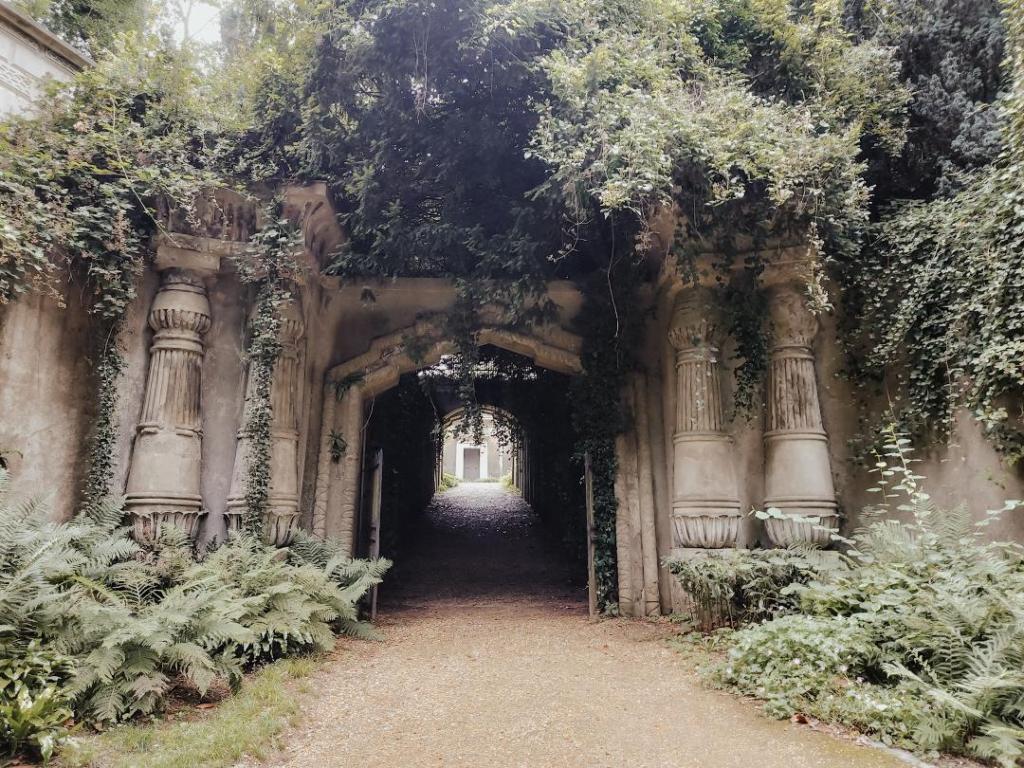
Leave a comment